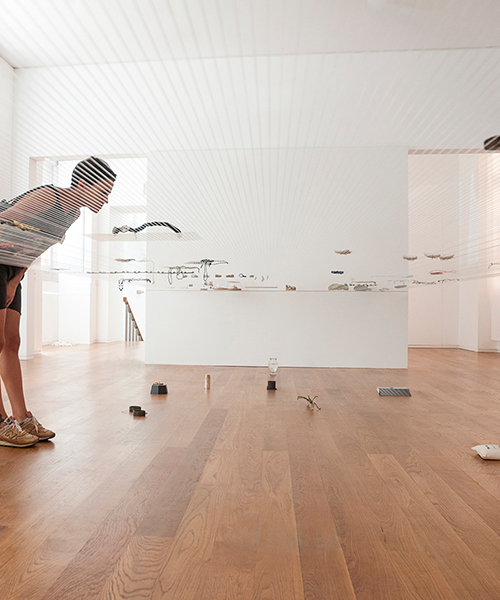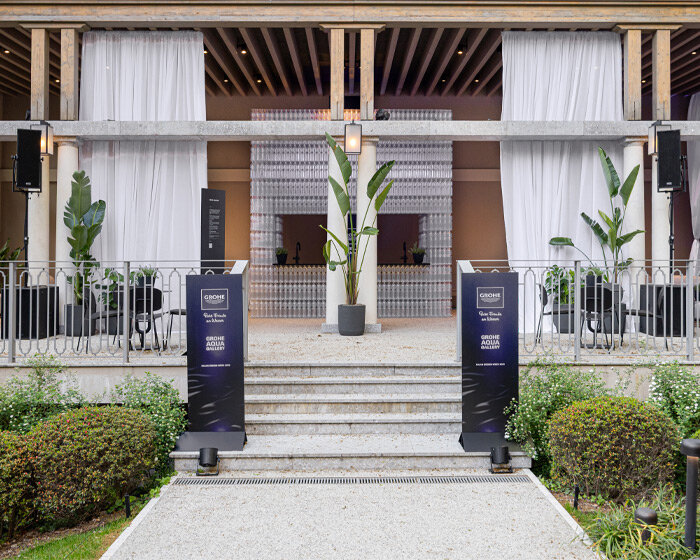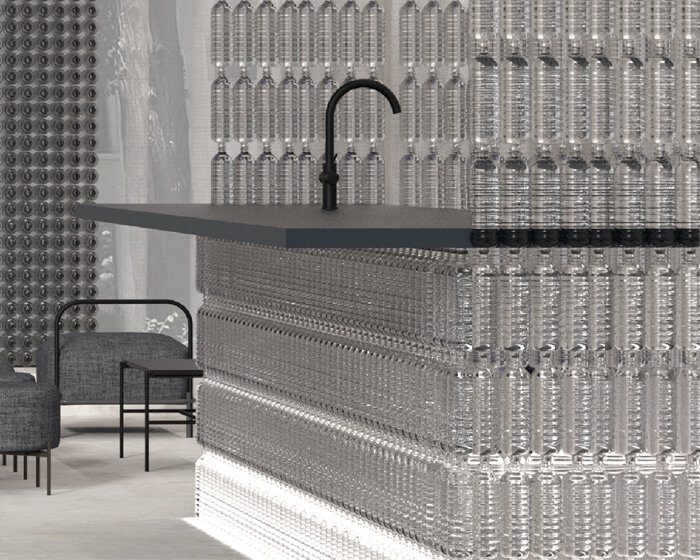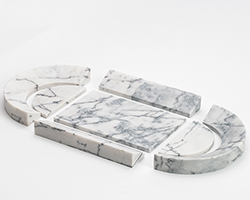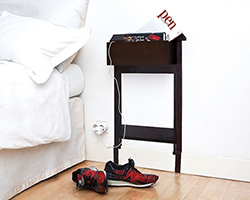designer fernando brízio has created a unique method of exhibiting items of jewellery currently on display at the sociedad nacional de belas artes in lisbon. the pre-existing spatial structure allowed brízio to install a floating ‘table’ of threads — nine meters by two and half meters, and only a single millimetre thick.

the exhibition is on display at the sociedad nacional de belas artes in lisbon
(above) image by david pereira
(main) image by eduardo sousa ribeiro
the unique display is part of the exhibition ‘PIN 10 years’, celebrating PIN’s (portuguese association for contemporary jewellery) tin anniversary. on display were ninety pieces of jewellery from several portuguese designers, selected for the event by curator marie-josé van den hoet. ‘the scarce financial resources available to build the exhibition, as well as the lightness and small size of the exhibited pieces, resulted during the design process in a progressive dematerialization of the exhibition device, which became progressively smaller and more economical’, explains fernando brízio. ‘smaller’ here seems to be an understatement, as the eventual incarnation of the exhibit took the form of 251 nylon wires — one millimetre thick — that were stretched taught between two wood panels and fastened to the building’s walls. with an anchoring process that resulted in the total secretion of screws and washers, the threads appear to emerge directly from the wall itself.
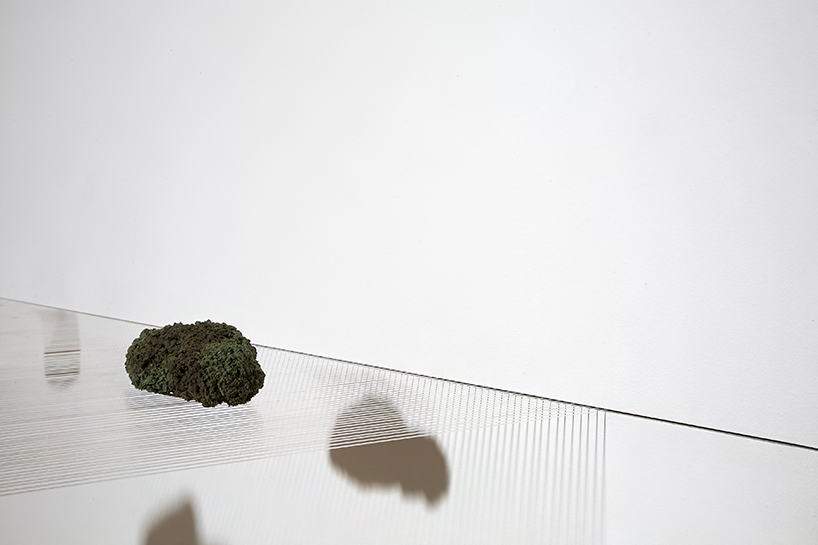
the exhibition celebrates the tenth anniversary of the PIN contemporary jewellery association
image by miguel ângelo guerreiro
the resultant cobweb of threads creates an almost invisible means of suspending the works, which appear at times to hover in thin air. ‘I was interested in making a surface that was invisible, transparent, light, surprising, and at times luminous,’ continues brízio. as natural light enters the room, the wires disappear against their white backdrop, leaving the contents of the exhibition to levitate. nylon was chosen for its elasticity and durability, allowing the strings to remain taught and the display unchanged for the duration of the exhibition. despite its strength, the ethereal sense of the material implies fragility and lightness — when touched, the exhibited pieces oscillate without falling.

the display is comprised of 251 nylon wires, each a single millimetre thick
image by eduardo sousa ribeiro

washers and screws and concealed, so the wires appear to emerge from the walls themselves
image by FG+SG (fernando guerra + sergio guerra)

on display were 90 pieces of jewellery from a number of portuguese designers
image by eduardo sousa ribeiro

the pieces appear to hover in mid air
image by david pereira
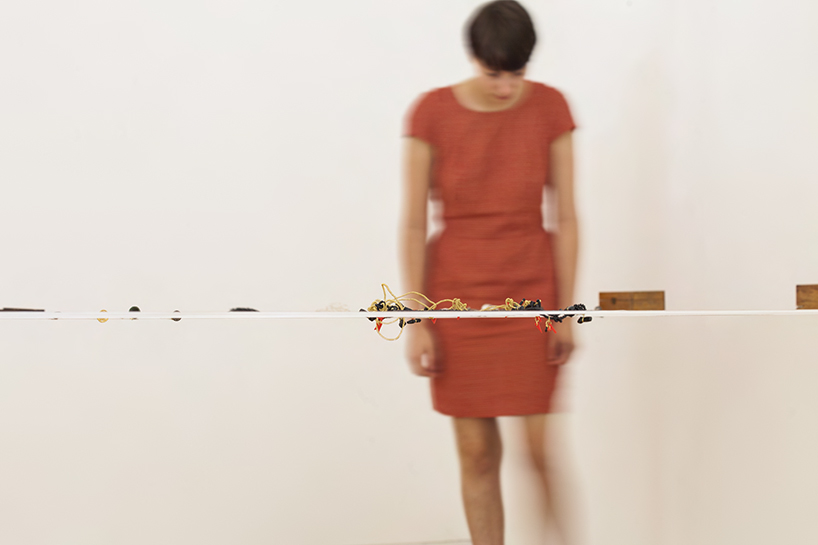
against a white backdrop, the threads almost entirely dissappear
image by david pereira

when touched, the items oscillate but do not fall
image by david pereira

nylon was chosen for its durability and elasticity
image by eduardo sousa ribeiro

the thin threads suggest a fragility to the piece
image by eduardo sousa ribeiro
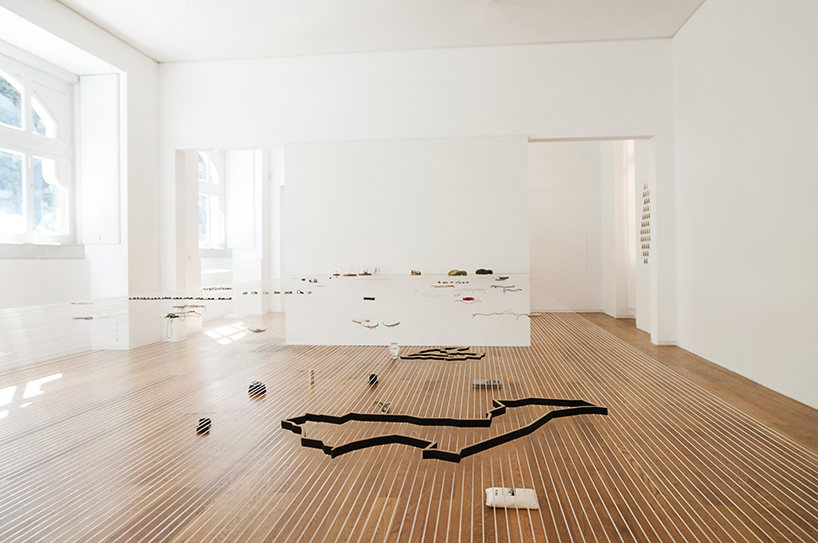
fernando brízio is based in lisbon, portugal
image by eduardo sousa ribeiro
designboom has received this project from our ‘DIY submissions‘ feature, where we welcome our readers to submit their own work for publication. see more project submissions from our readers here.
edited by: peter corboy | designboom
Save
